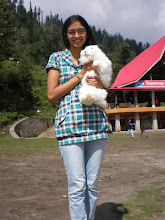Indian food has been influenced by a 5000 year history of various groups and cultures interacting with the subcontinent, leading to the diversity of flavors and regional cuisines found in modern-day India.
 |
| Variety of spices |
Indian food consists of the foods and dishes of India, is characterized by the extensive use of various Indian spices, herbs, vegetables and fruit, and is also known for the widespread practice of vegetarianism in Indian society. Each family of Indian food includes a wide collection of dishes and cooking techniques. As a result, it varies from region to region, reflecting the diversity of India.
Hindu beliefs and culture have played a powerful role in the evolution of Indian food. However, food across India also evolved as a result of the subcontinent's large-scale cultural interactions with Mongols and Britain. Indian food has influenced cuisines across the world, especially those from Southeast Asia and the Caribbean.
Many recipes first emerged during the initial Vedic period, when India was still heavily forested and agriculture was complemented with game hunting and forest produce. In Vedic times, a normal diet consisted of fruit, vegetables, grain, dairy products, honey, and poultry and other sorts of meats. A food classification system that categorized any item as saatvic, raajsic or taamsic developed in Ayurveda. In this period eating beef became taboo, a practice still common today.
Ingredients:-The staples of Indian cuisine are Bajri, rice, atta (whole wheat flour), and a variety of pulses, of which the most central to this food are masoor ( red lentils), channa (bengal gram), toor (pigeon pea ), urad (black gram), and moong (green gram). Pulses may be used whole – for e.g., dhuli moong or dhuli urad – or split. Split pulses, or dal, are used extensively. Some pulses, like channa and mung, are also processed into flour called besan.
Most Indian curries are cooked in vegetable oil. In northern and western India, peanut oil is popular, while in eastern India, mustard oil is more commonly used. Coconut oil is used widely along the western coast, especially in Kerala; gingelly (sesame) oil is common in the south as well. In recent decades, sunflower and soybean oil have become popular across India. Hydrogenated vegetable oil, known as Vanaspati ghee, is another popular cooking medium. Butter-based ghee, or desi ghee, is less used than before.
The most important or frequently used spices in Indian cuisine are chilli pepper, black mustard seed (sarso), cumin (jeera), turmeric (haldi), fenugreek (methi), asafoetida (hing), ginger (adrak), coriander (dhania), and garlic (lehsun). Popular spice mixes are garam masala, a powder that typically includes five or more dried spices, especially cardamom, cinnamon, and clove. Each region, and sometimes each individual chef, has a distinctive garam masala blend. Goda masala is a comparable, though sweet, spice mix that is popular in Maharashtra. Some leaves commonly used for flavoring include tejpat (Bay leaf), coriander leaf, fenugreek leaf, and mint leaf. The use of curry leaves and roots is typical of Gujarati and all South Indian food. Sweet dishes are seasoned with cardamom, saffron, nutmeg, and rose petal essences.


 00:14
00:14
 Indu
Indu

0 comments:
Post a Comment